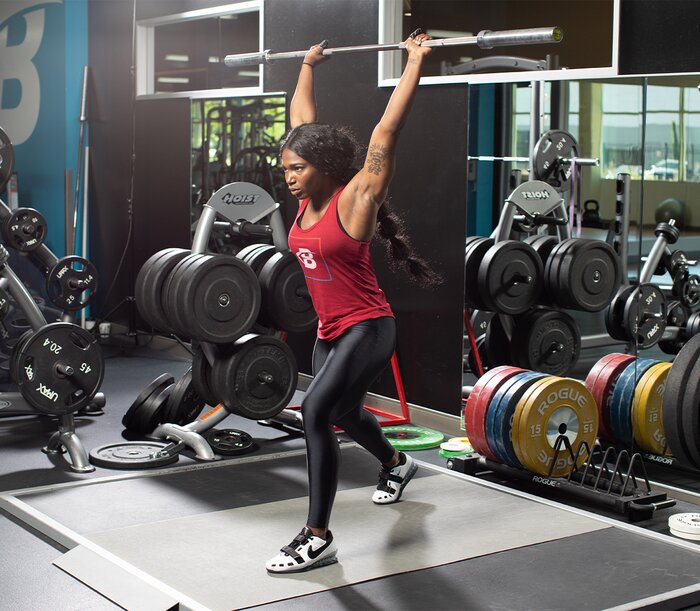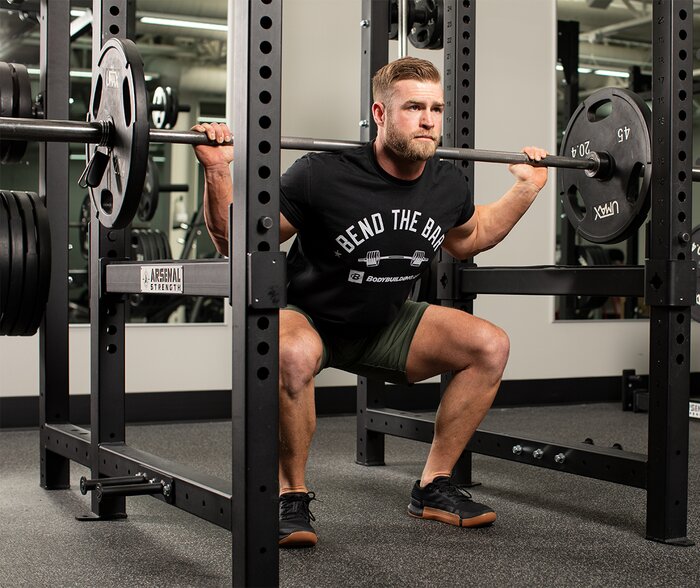Products You May Like
Muscular Hypertrophy | Sarcoplasmic Hypertrophy | Muscle Fibers | Nutrition for Muscle Growth
Q. I’ve heard that fast-twitch muscle fibers are the largest in the body. How can I target these in my training to help me build mass?
You heard right! The human body is equipped with a variety of muscle fiber types, but most fall into two categories: slow-twitch muscle fibers and fast-twitch muscle fibers. Slow-twitch fibers are smaller and endurance-based, while fast-twitch fibers are used more for strength and power activities.
Unfortunately, they’re also neglected in most lifting and bodybuilding programs. It’s time to change this! Here’s how you can use them to maximize your total muscle development.
Why are Fast-Twitch Fibers Important?
Aside from their sheer size, fast-twitch fibers also store a great deal of carbohydrates. For every gram of carbohydrate you store, you also draw about 3 grams of water into the muscle. Thus, bodybuilders who optimize fast-twitch fiber development will obtain a fuller, denser look.
The balance of fast-twitch and slow-twitch fibers in your body is determined by genetics, but there’s still plenty you can do in your training to maximize growth and strength in the muscles you have. Specifically, consider two variables when trying to activate fast-twitch muscle fibers: the amount of weight you lift and how you manage fatigue during sets.
Pre-workout supplements contain proven fatigue-fighting ingredients to keep you grinding during hard and heavy lifting.
Heavy Lifting for Fast-Twitch Growth
Your body recruits muscle fibers based on the force demands placed upon it. If the force demands from an exercise are less, you’ll use more slow-twitch fibers. The greater the intensity—meaning percentage of your one-rep max, not just how strenuous an exercise feels—the more you’ll tap into fast-twitch fibers.
In 2004, researchers found that competitive powerlifters and Olympic weightlifters had much greater fast-twitch muscle-fiber development than bodybuilders. It’s at least partially a question of programming. The traditional bodybuilding program focuses on the 8-12 repetition range with moderately heavy loads and 60-90 seconds of rest between sets.

Compare this with powerlifters, who train extensively in a 1-5 repetition range with very heavy weights and 3-5 minutes of rest. Studies show that individuals who neglect training in a heavier range will not program their nervous system to effectively recruit their largest fast-twitch fibers.
However, it’s also true that the bodybuilders still had larger overall muscle size! This is because, unlike powerlifters, they had also drastically increased the size of their slow-twitch muscle fibers. So no, I’m not advocating fast-twitch-only training.
The lesson for you: Do both! Incorporate heavy low-rep training sessions in addition to the traditional 8-12 or higher repetition range for improved fast-twitch muscle fiber development, and thus greater growth. That’s a major programming theme in my training plan Project Mass: Jake Wilson’s 16-Week Muscle-Building Program.
Fatigue Is Your Friend
Along with intensity, fatigue is the second surefire way to increase fast-twitch muscle fiber recruitment. Your body’s first impulse is to recruit slow-twitch fibers, but once you fatigue those fibers, it has to recruit fast-twitch fibers to do what is being asked of it.
This is where how you train is more important than how your workout looks on paper. For example, most lifters take brief rest periods between repetitions once a set becomes painful. When you do this intentionally, it is known as ”cluster set“ training, but what I’m talking about is largely subconscious, such as when a subject in my lab pauses between reps during a difficult set of squats.
After seeing it countless times, my colleagues and I decided to study what happens in the body during this intra-set rest. We had athletes perform 4 sets of 8 heavy squats, either with or without brief rests in the middle of the set. We found that intra-set rest decreased fatigue, but it also prevented the body from recruiting the fast-twitch muscle fibers.

The lesson for you: If you find yourself pausing when a movement gets difficult, you may be short-changing your gains!
Creatine monohydrate helps both strength- and size-focused workouts be more effective. For any serious lifter, 5 grams per day is a must. VIEW ALL
How to Make Fast-Twitch Fibers a Priority
The existing evidence strongly supports the conclusion that heavy lifting and muscle fatigue largely dictate the recruitment of fast-twitch muscle fibers. To put these principles into action, perform a heavy training day every 2-3 workouts, focused squarely on getting strong. A good training split for a given body part could look like this:
- Workout 1: Heavy, 1-5 reps, rest 3-5 min., compound movements
- Workout 2: 8-12 reps, rest 60-90 sec., mainly compound movements
- Workout 3: 12+ reps, rest 30-60 sec., supersets, compound and isolation movements
On heavy days, prioritize movements that recruit the most muscle, such as squats, deadlifts, bench presses, shoulder presses, dips, and pull-ups. On those days, rest big and focus on moving heavy weight.
On your 8-12-rep days, keep rest times moderate and hammer out repetitions one after the other. Regardless of the pain you may experience, don’t pause in the middle of a set. And on your third day, maximize the muscle pump and consider experimenting with pump-focused techniques like blood flow restriction training.
Keep fighting and pushing, and your body will respond!
If you’re looking to build size and strength, you need protein! Aim for 0.8-1 grams per pound of body weight per day, especially on training days.
